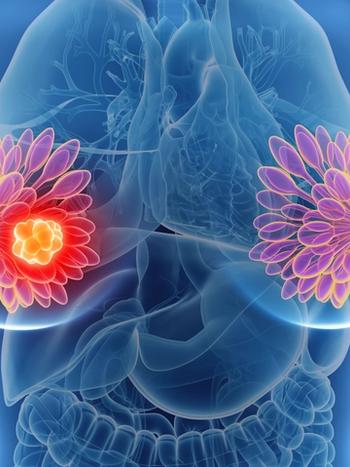
Enzyme May Drive Tamoxifen Resistance in ER-Positive Breast Cancer
A preclinical study looking at ER-positive breast cancer indicated that tamoxifen response was improved by reducing levels of the enzyme APOBEC3B and worsened by increasing levels of the enzyme.
Results of a preclinical study looking at estrogen receptor (ER)-positive breast cancer indicated that response to tamoxifen was significantly improved by reducing levels of the enzyme APOBEC3B and significantly worsened by increasing levels of the enzyme.
These results (abstract S4-07), presented at the 2015 San Antonio Breast Cancer Symposium (SABCS) by Reuben Harris, PhD, investigator of the Howard Hughes Medical Institute, professor in the department of biochemistry, molecular biology, and biophysics at the University of Minnesota, Twin Cities, indicated that APOBEC3B may be a driver of resistance to tamoxifen.
According to Harris, several recent studies have shown that elevated levels of APOBEC3B in patients with ER-positive breast cancer have been associated with worse outcomes. Data presented at the 2015 AACR Annual Meeting showed that among 285 patients with ER-positive breast cancer treated with tamoxifen, those patients who had high levels of APOBEC3B in their primary tumors had shorter progression-free survival compared with patients with low levels of APOBEC3B (7.5 vs 13.3 months; P = .0001).
In the current study, Harris and colleagues wanted to see if they could establish whether or not ABOPEC3B drives the poor outcomes in these patients. To do that they transplanted mice with a human ER-positive breast cancer cell line called MCF-7L and engineered the cells to have either high or low APOBEC3B expression. The mice were then treated with tamoxifen.
The researchers found that those mice that received cells with decreased expression of APOBEC3B had prolonged responses to tamoxifen compared with those who got cells that were not manipulated. In addition, the mice with increased APOBEC3B expression developed tamoxifen resistance more rapidly.
Harris explained that APOBEC3B is an enzyme that causes genetic mutations and that this study suggests that by promoting genetic mutation it drives tamoxifen resistance. He also noted that this study indicates that APOBEC3B, as a dominant intracellular source of genetic mutation, could potentially be controlled to prevent cancer progression.
To further explain the importance of APOBEC3B, Harris made an analogy using melanoma. “Long ago it was discovered that UV rays were harmful and cause lesions in DNA. Cosmetic companies were innovative in developing sunscreens that became better and better over time and people wore more protective clothing and that lead to improved health,” Harris said. “Now we are in a similar state with APOBEC3B in that we have identified the mutational source and are beginning to appreciate the impact that it has on some cancers, and we can think about innovative ways of stopping this enzyme and improving outcomes.”
Newsletter
Stay up to date on recent advances in the multidisciplinary approach to cancer.

























































































